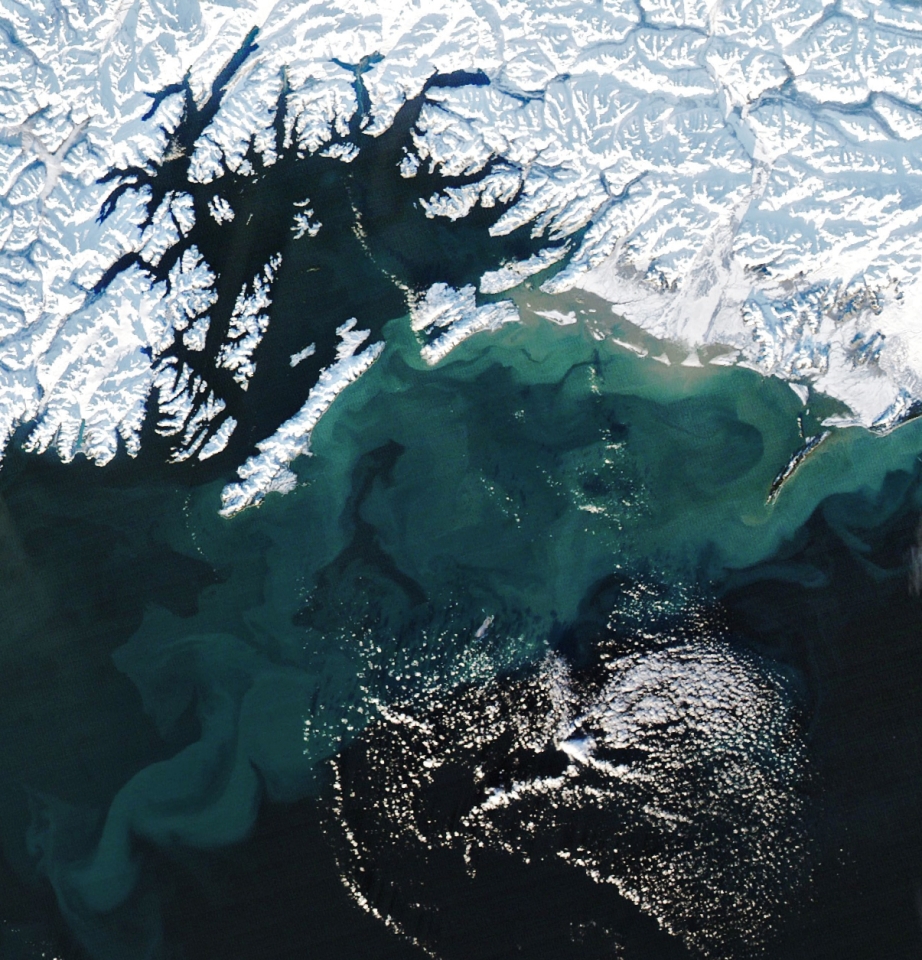Gepubliceerd op 30 december 2023
Sediment floating in the Gulf of Alaska lent contrasting color to this otherwise winter-white scene acquired by the MODIS (Moderate Resolution Imaging Spectroradiometer) instrument on NASA’s Aqua satellite on December 29, 2023.
After an unusually snowy start to winter, southern Alaska’s coastline remained under a blanket of white in late December. Meanwhile, greens and tans swirled in the dark blue water offshore. The dullness of the hues near shore suggests that the water is mostly colored by sediment. It is likely that phytoplankton—microscopic plant-like organisms—contributed to some of the hues farther from the coast.
Much of the sediment in this region comes from “glacial flour” carried into the gulf by the Copper River. Glacial flour forms as glaciers move over bedrock and grind it into a fine silt. When suspended in water, glacial flour can make the water appear an opaque turquoise color—similar to phytoplankton blooms. The sediment carries iron and other nutrients that can spur the growth of these tiny marine organisms.

“There are always phytoplankton in the water, but usually at lower levels in the wintertime at these latitudes,” said Aimee Neeley, a biological oceanographer at NASA’s Goddard Space Flight Center.
Although it is difficult to determine the composition of these colorful swirls, NASA’s PACE (Plankton, Aerosol, Cloud, ocean Ecosystem) mission, scheduled to launch in February 2024, will help scientists distinguish between sediment and phytoplankton by providing hyperspectral observations of ocean color. PACE is designed to advance the assessment of ocean health by measuring the distribution of the different species of phytoplankton that sustain the marine food web.
“PACE will allow us to differentiate not only phytoplankton groups,” Neeley said, “but also phytoplankton from particulate and dissolved matter in coastal regions.”
Source:
NASA Earth Observatory. (2023, December 29). Colorful swirls in the Gulf of Alaska.